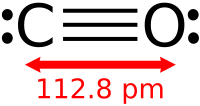
Photo from wikipedia
The industrial sector is the backbone of China’s national economy. The industrial carbon emission efficiency (ICEE) of China is directly related to the achievement of carbon emission reduction targets. This… Click to show full abstract
The industrial sector is the backbone of China’s national economy. The industrial carbon emission efficiency (ICEE) of China is directly related to the achievement of carbon emission reduction targets. This paper reports on the use of the minimum distance (min-SBM) method to determine the ICEE of 30 provinces in China during 1998–2015, as well as the use of a spatial econometric method to investigate the convergence and influencing factors of the regional ICEE. The results indicate significant regional differences in the ICEE. The provinces with higher average values of ICEE are located in the eastern coastal areas, whereas the provinces with lower average values of ICEE are located in the central and western inland regions. The results of the spatial autocorrelation index reveal that China’s inter-provincial ICEE exhibits significant spatial autocorrelation characteristics, and its spatial distribution demonstrates a certain regularity. The local indicators of spatial association diagram further illustrate that most provinces in China have high and low agglomeration values. With the introduction of the spatial effect, the absolute and conditional convergence rates increase. In addition to the non-significant industrial structure effect, the level of economic development, foreign direct investment, technological progress, and government intervention demonstrate a positive impact on the ICEE convergence, whereas the energy consumption structure has a negative impact. This work investigates the cause for the regional gap in China’s current ICEE. Suggestions for improving the efficiency of China’s industrial carbon emissions and narrowing the regional gap are provided, which serve as a reference value for China to achieve the peak of carbon dioxide emissions before 2030.
Journal Title: Environmental Science and Pollution Research
Year Published: 2021
Link to full text (if available)
Share on Social Media: Sign Up to like & get
recommendations!